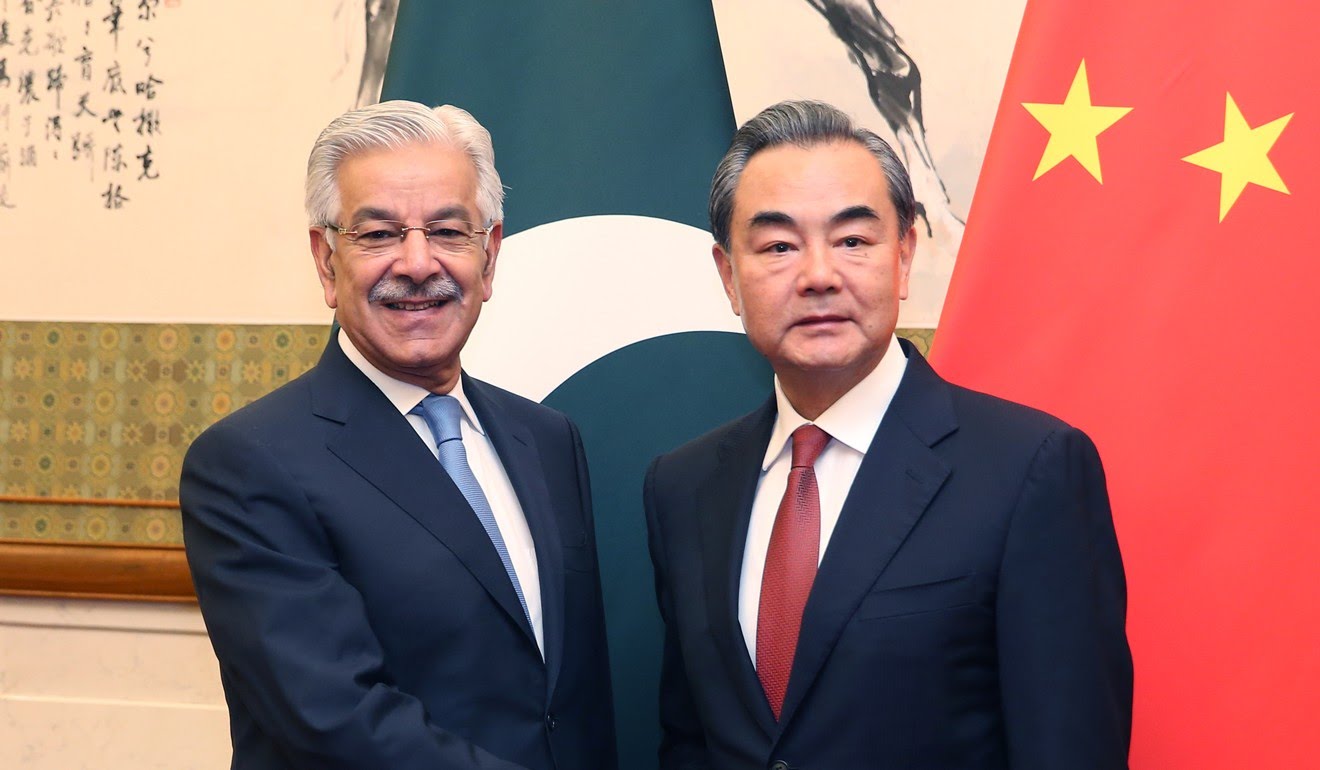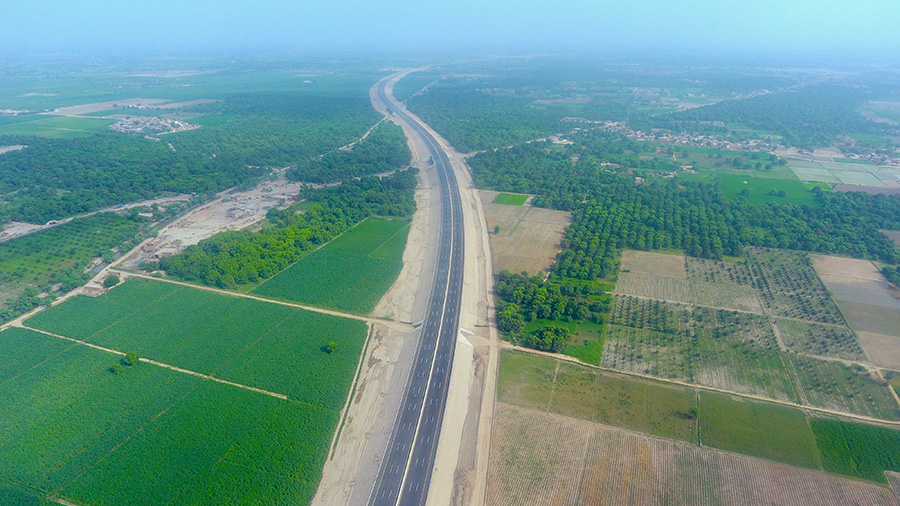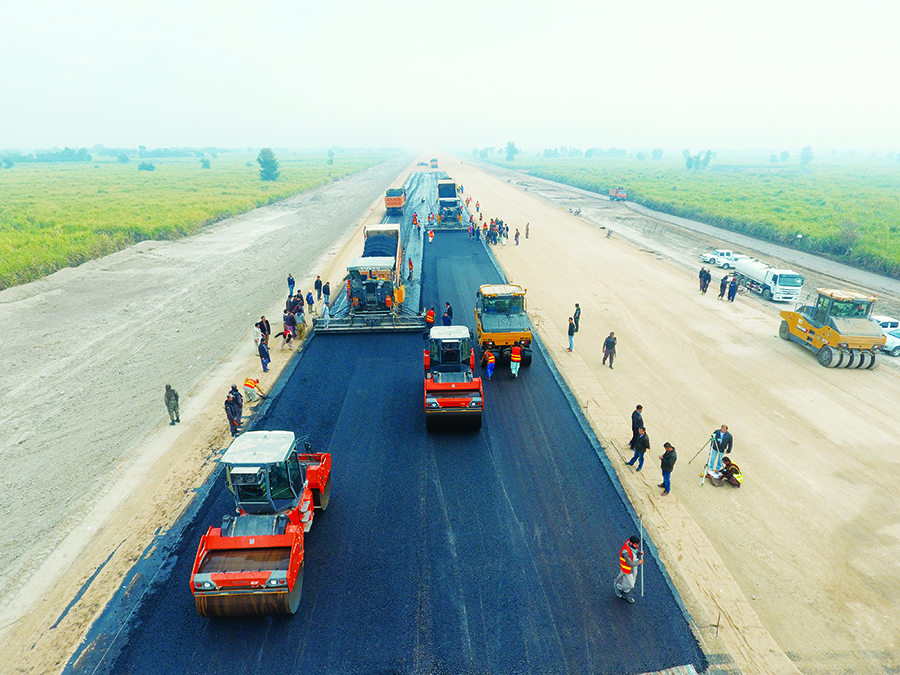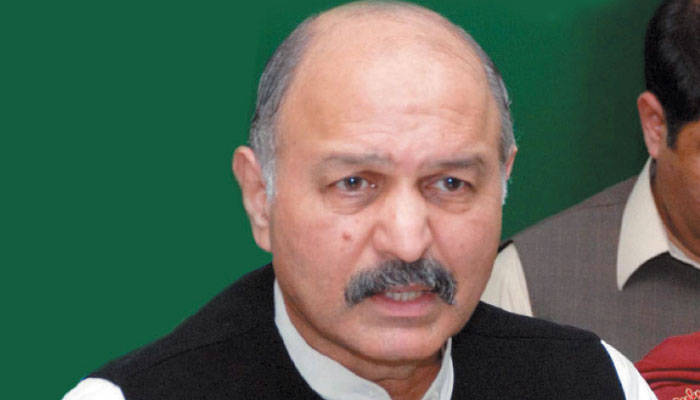Clutch
ELITE MEMBER

- Joined
- Aug 3, 2008
- Messages
- 17,011
- Reaction score
- -3
Just who will the China-Pakistan Economic Corridor really benefit?
Adnan Aamir says many in Pakistan see the projects as a way to boost the economy and solve unemployment woes. Others, however, worry about debt, an influx of Chinese workers and few opportunities for locals

Adnan Aamir
Published: 11:23am, 13 Sep, 2017
Updated: 7:31pm, 13 Sep, 2017
Pakistan has always relied heavily on foreign remittances and foreign aid to bolster its struggling economy. As such, signing the China-Pakistan Economic Corridor agreement in 2013 was seen as a blessing for the country. The corridor is part of China’s Belt and Road initiative and comprises energy and infrastructure projects worth some US$57 billion.
Many saw the project as a solution to Pakistan’s economic woes and even termed it a game changer, capable of producing millions of jobs and solving the country’s unemployment problem.
However, soon after the project’s inception, it came in for criticism from different quarters. The main fear is that it has the potential to convert Pakistan into an economic colony of China.
Details of the agreement have not yet been made public, but what is known suggests the majority of the projects revolve around loans that must be repaid. A report from a brokerage house in Pakistan said the country could have to pay US$90 billion to China over 30 years.
Moreover, economic experts have started questioning the assertion that the economic corridor will bring millions of jobs for the people of Pakistan, given that China is bringing its own labour force. Thus far, there has not been any major job creation.

Pakistani Foreign Minister Khawaja Asif, left, with his Chinese counterpart Wang Yi in Beijing , last Friday. Photo: Xinhua
Chinese labour is cheap compared to workers in Pakistan. So, Chinese companies find it economically beneficial to bring their own workforce from China rather than employing local labour. Chinese workers are also accustomed to long hours in tough conditions, unlike many of their Pakistani counterparts. As a result, local labour isn’t the automatic choice for employment in economic corridor projects.
[/paste:font]
Despite concerns, Chinese labourers have started pouring into Pakistan and can be seen in large cities including Karachi, Lahore and Islamabad. According to the Karachi Chamber of Commerce and Industry, more than 71,000 Chinese nationals travelled to Pakistan in 2016, a 41 per cent increase from the previous year.
SUBSCRIBE TO OPINION
Get updates direct to your inbox
By registering for these newsletters you agree to our T&C and Privacy Policy
Small as that figure may seem, it proves that the number of Chinese is increasing. This provides oxygen to the claim that, ultimately, economic-corridor-related jobs will be secured by Chinese and not Pakistanis.
Read More

Huaneng aims to generate 60 per cent more electricity from power plants along new Silk Road
Furthermore, Balochistan, the least populated province of Pakistan, faces the greatest threat from the influx of Chinese. Home to the strategic port city of Gwadar, Balochistan has just 6 per cent of Pakistan’s population, and its populace is spread thinly. There are growing fears that Chinese nationals heading to the province will not only take jobs, but could eventually outnumber the people of Balochistan, leaving locals as a minority.
One report, by the Federation of Pakistan Chambers of Commerce and Industry, predicts that the Chinese population will outnumber natives of Balochistan by 2048. It estimates that after completion of economic corridor projects, more than 600,000 Chinese will enter Pakistan each year. The Pakistan government and Chinese Diplomatic Mission in Pakistan have both rejected the report, but concerns linger.
There are also fears that the influx of Chinese will drastically alter the lives of local people, given that the culture, values, way of life and religious beliefs of Chinese differ completely from Pakistanis’.
The majority in Pakistan consider the China-Pakistan Economic Corridor economically beneficial. However,others believe that the project’s potential pitfalls could outweigh the good points, and need to be taken into account. Chinese claims about the project, they say, should not be accepted at face value.
Adnan Aamir is a journalist and columnist based in Quetta, Pakistan. @iAdnanAamir

Adnan Aamir
Adnan Aamir is a journalist and columnist based in Quetta, Pakistan.
Adnan Aamir says many in Pakistan see the projects as a way to boost the economy and solve unemployment woes. Others, however, worry about debt, an influx of Chinese workers and few opportunities for locals

Adnan Aamir
Published: 11:23am, 13 Sep, 2017
Updated: 7:31pm, 13 Sep, 2017
Pakistan has always relied heavily on foreign remittances and foreign aid to bolster its struggling economy. As such, signing the China-Pakistan Economic Corridor agreement in 2013 was seen as a blessing for the country. The corridor is part of China’s Belt and Road initiative and comprises energy and infrastructure projects worth some US$57 billion.
Many saw the project as a solution to Pakistan’s economic woes and even termed it a game changer, capable of producing millions of jobs and solving the country’s unemployment problem.
However, soon after the project’s inception, it came in for criticism from different quarters. The main fear is that it has the potential to convert Pakistan into an economic colony of China.
Details of the agreement have not yet been made public, but what is known suggests the majority of the projects revolve around loans that must be repaid. A report from a brokerage house in Pakistan said the country could have to pay US$90 billion to China over 30 years.
Moreover, economic experts have started questioning the assertion that the economic corridor will bring millions of jobs for the people of Pakistan, given that China is bringing its own labour force. Thus far, there has not been any major job creation.

Pakistani Foreign Minister Khawaja Asif, left, with his Chinese counterpart Wang Yi in Beijing , last Friday. Photo: Xinhua
Chinese labour is cheap compared to workers in Pakistan. So, Chinese companies find it economically beneficial to bring their own workforce from China rather than employing local labour. Chinese workers are also accustomed to long hours in tough conditions, unlike many of their Pakistani counterparts. As a result, local labour isn’t the automatic choice for employment in economic corridor projects.
[/paste:font]
Despite concerns, Chinese labourers have started pouring into Pakistan and can be seen in large cities including Karachi, Lahore and Islamabad. According to the Karachi Chamber of Commerce and Industry, more than 71,000 Chinese nationals travelled to Pakistan in 2016, a 41 per cent increase from the previous year.
SUBSCRIBE TO OPINION
Get updates direct to your inbox
By registering for these newsletters you agree to our T&C and Privacy Policy
Small as that figure may seem, it proves that the number of Chinese is increasing. This provides oxygen to the claim that, ultimately, economic-corridor-related jobs will be secured by Chinese and not Pakistanis.
Read More
Huaneng aims to generate 60 per cent more electricity from power plants along new Silk Road
Furthermore, Balochistan, the least populated province of Pakistan, faces the greatest threat from the influx of Chinese. Home to the strategic port city of Gwadar, Balochistan has just 6 per cent of Pakistan’s population, and its populace is spread thinly. There are growing fears that Chinese nationals heading to the province will not only take jobs, but could eventually outnumber the people of Balochistan, leaving locals as a minority.
One report, by the Federation of Pakistan Chambers of Commerce and Industry, predicts that the Chinese population will outnumber natives of Balochistan by 2048. It estimates that after completion of economic corridor projects, more than 600,000 Chinese will enter Pakistan each year. The Pakistan government and Chinese Diplomatic Mission in Pakistan have both rejected the report, but concerns linger.
There are also fears that the influx of Chinese will drastically alter the lives of local people, given that the culture, values, way of life and religious beliefs of Chinese differ completely from Pakistanis’.
The majority in Pakistan consider the China-Pakistan Economic Corridor economically beneficial. However,others believe that the project’s potential pitfalls could outweigh the good points, and need to be taken into account. Chinese claims about the project, they say, should not be accepted at face value.
Adnan Aamir is a journalist and columnist based in Quetta, Pakistan. @iAdnanAamir

Adnan Aamir
Adnan Aamir is a journalist and columnist based in Quetta, Pakistan.















